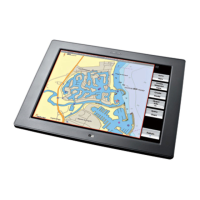Note: Only valid numerical entries will be accepted for gauge
configuration.
• When you have configured your gauge, select Return until
you see the
Save Changes button, then select Save
Changes.
This completes the analog gauge configuration.
9.4 Instruments: New panel
¾
To create a new panel
• Select Pages then Instruments.
• Select
New Panel.
An panel consists of a background image and a gauge
template. The gauge template controls how many gauges you
can put on a panel and their location on the panel.
• Select the background image/gauge template you wish to use.
• Select
Name New Panel. Use the keyboard to enter a name
for the panel.
• Select
OK.
¾
To add a gauge:
• Select Configure Gauge.
All the possible positions for gauges are shown.
• Select the position for the gauge you want to add.
• Select
Data Channel.
A list of available data channels is shown.
• (Optional) Select the Active Channels button. If this is:
◦ On. Only the data channels that are currently receiving
data are displayed.
◦ Off. All possible data channels are displayed.
Select it to change the setting.
• Select the specific data channel that you want to display on the
gauge.
• Select
OK.
• Repeat this sequence to add another gauge.
You can configure the gauges to show the data in digital or analog
format. Digital is the default.
Instruments |133

